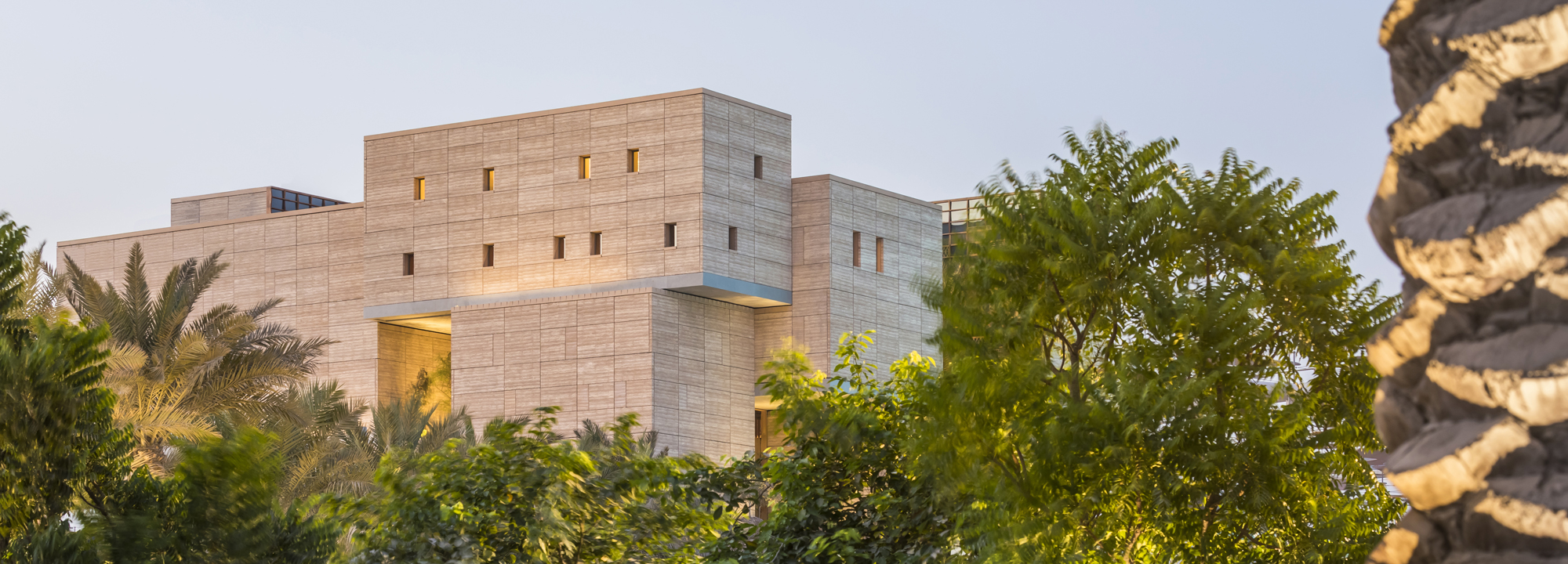Upholding Tradition with Prefabricated Parts
Moroccan Expo Pavilion by Oualalou + Choi

Considering the scale of the buildings in Dubai, the pavilion for the Expo site designed by Oualalou + Choi for the Kingdom of Morocco could hardly pass as a high-rise. Yet its height – 34 metres – makes it a serious contestant for the title of the world’s tallest building with rammed earth facades. Fourteen exhibition halls, a Moroccan restaurant, a café and offices on approx. 6,000 square metres of floor space are contained in its 22 stacked cubes. In conceptualising the new-build as a “stacked village” the Parisian architects sought to draw attention to the rammed earth construction technique in widespread use in Morocco. In contrast to the traditional approach, the Dubai pavilion has a reinforced concrete skeleton structure, and also the facades contain pre-cast reinforced concrete units, each clad on the outside in four to eight rammed earth elements. The latter are all 15 centimetres thick but vary in width between 2.10 to 3 metres wide and between 1.20 and 1.80 metres in height. In developing them, the architects worked closely with the Australian rammed earth specialist Rick Lindsay and the Earth Structures Group, his company.
The rooms are accessed from a central internal courtyard, from where a ramp winds its way upward through all the storeys. The courtyard-facing walls are based on an aluminium post-and-beam system with battens clad in wood. Opaque panes of glass alternating with transparent anti-sun glass are also a feature. As the architects wanted to forgo air conditioning in the pavilion as far as possible, gaps were left between the stacked blocks for wind to waft through. The roof gardens are also to provide additional cooling.
Dismantling such a painstakingly constructed house after the Expo’s six months’ duration would scarcely be acceptable in ecological terms and it was thus originally planned to later convert the pavilion into a residential building – as evidenced by window openings as necessary for this purpose but closed off for the length of the Expo with smaller, removable rammed earth elements. It is now being discussed whether a cultural use would be more suitable for the building. Be that as it may, it can only be hoped that the “stacked village” will be spared the fate of MVRDV’s “stacked landscapes” in Hanover, where their Dutch pavilion is still rusting and decaying away 22 years after Expo 2000.
Further Informationen:
Advice rammed earth construction: Earth Structures Group
TGA-Planning: Mace
Façade planning: T/E/S/S

